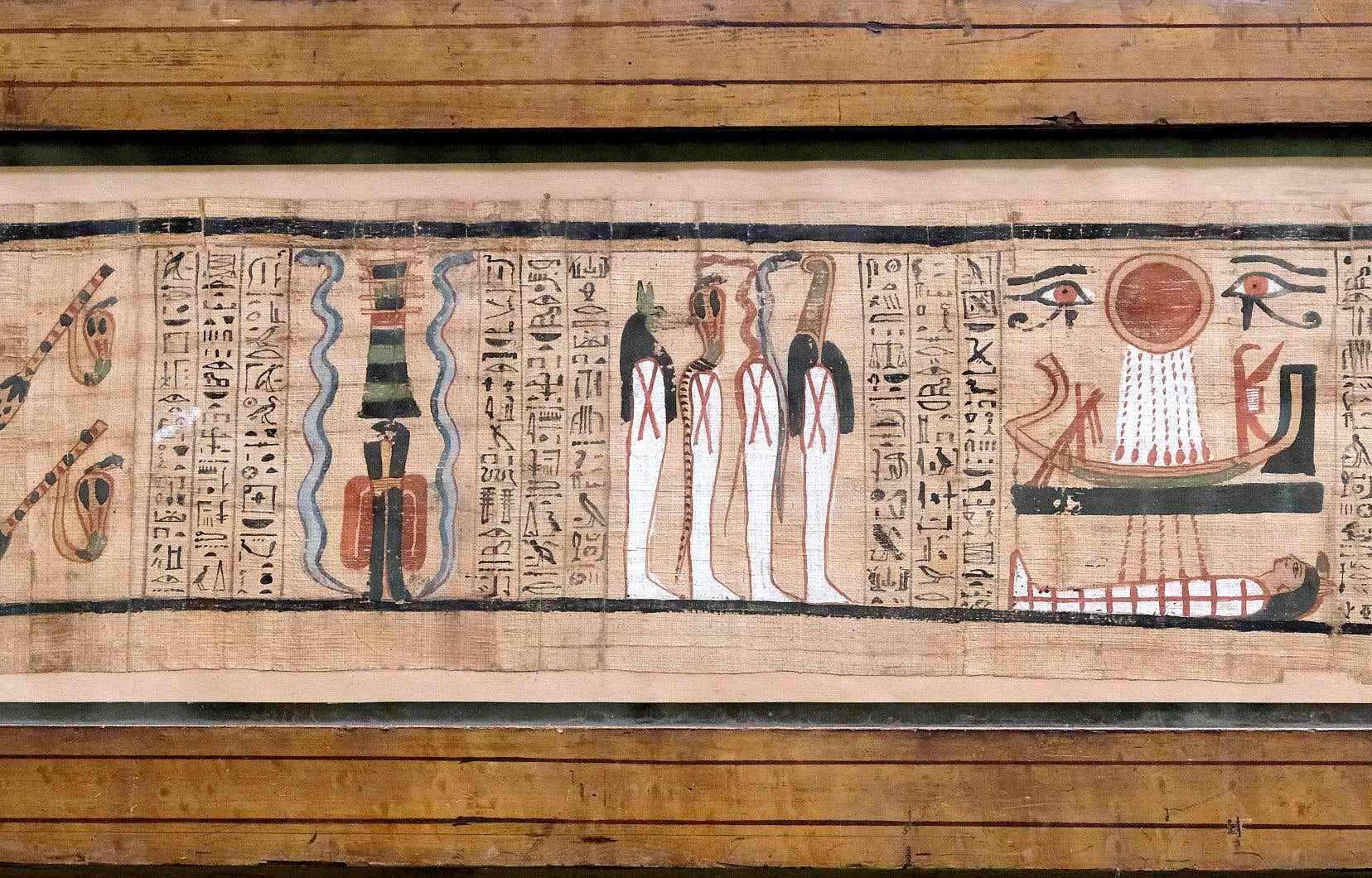Montreal is hosting an international symposium on Egyptology this weekend. The conferences and debates open to the public commemorate the first deciphering of hieroglyphs by the Frenchman Jean-François Champollion exactly 200 years ago, but also the discovery 100 years ago of the tomb of the pharaoh Tutankhamen.
“The idea is to bring together in Montreal big names in Egyptology who are linked to these two discoveries,” explains Professor Valérie Angenot, from the Department of Art History at UQAM, herself of the number. She co-organizes the symposium entitled Golden Years (1822-1922-2022)
“There is the deciphering of hieroglyphs on the one hand, an element of immaterial culture which made it possible to reacquire the language of Egypt and to understand the writing of temples and papyri. Then there is the discovery of a completely material heritage with the tomb of Tutankhamun. It seemed interesting to me from a heritage point of view to bring together the two themes in a single event, with the anniversary dates to justify it. »
Unequaled discoveries
The two axes are organizing conference days that will be held at the Coeur des sciences at UQAM, downtown, on June 17, 18 and 19. The inaugural conference, delivered on Friday evening by archaeologist Alain Zivie (CNRS in Paris), will circumscribe the issues around the “unequaled discoveries” of hieroglyphs and Tutankhamun. This will be followed by the screening of the BBC documentary Tutankhamun in Color based on colorized 1922 images.
This whole weekend will be an opportunity to hear, in particular, professors Elizabeth Frood (Oxford) and Aidan Dodson (Bristol), curator Christian Greco (Turin Museum) and librarian Vanessa Desclaux (BNF).
Marc Gabolde (Paul Valéry – Montpellier III) will deal with the “extraordinary journeys of some objects from Tutankhamun’s tomb” (see box).
Aspiring Egyptologist
This archaeological breakthrough relaunched Egyptomania in the world with “Toutmania”, which left clearly visible traces in Hergé, in fashion and in architecture.
Valérie Angenot was hooked at a very young age, when her mother took a trip to Egypt and her father, Marc Angenot, a professor at McGill, lent her the Egyptian grammar of Champollion borrowed from his university. “I spent the whole summer with this book, studying Coptic since Champollion transcribed the hieroglyphs into this language. I was 10 years old and it was already quite late, because my colleagues rather started at 7 or 8 years old. »
She eventually studied art history, with a specialty in Egyptology, a subject she has been teaching ever since. There are training programs in Egyptology all over the world, in Toronto and Vancouver in Canada, but UQAM remains the only university in Quebec to offer some specialized courses.
Mme Angenot and fellow symposium co-organizer Jean Revez of the Department of History would like to develop a more comprehensive short program.
Two Quebec doctoral students will summarize the state of these university places, collections and museum projects in Montreal in a block on Saturday afternoon.
Archaeological discoveries continue on a very regular basis, with the support of advanced technologies. Satellites make it possible to identify areas of interest to be surveyed. Egypt, however, has much more control over access to sites and now keeps the results of excavations, whereas its riches were once systematically plundered by foreign archaeologists.
The opening of the Grand Egyptian Museum in Cairo, under construction for more than 20 years, which has been delayed by the pandemic, is expected shortly. The permanent exhibition space of more than 20,000 square meters, designed by the Heneghan Peng studio, is installed near the pyramids of Giza and will house some 130,000 objects, including a few thousand from Tutankhamen’s tomb, which will never leave places.
See like an Egyptian
3D modeling and virtual reality make it possible to reconstruct and visit fragile places. Professor Angenot is working on an eye-tracking project with UQAM’s NeuroLab. A tomb will be reconstructed digitally at the Montreal Museum of Fine Arts and devices will allow to compare the reaction of the current eyes of laymen and Egyptologists in front of these ancient funeral decorations. “We are going to probe the brains of Egyptians a little bit,” explains the professor.
One of his postdoctoral students participated in the creation with Ubisoft of a computer program for deciphering ancient writing called Fabricius, now operated by Google. “Machines recognize and read hieroglyphs,” says the Egyptologist. It’s not quite finished, but the training has begun. »
Genetics also allows discoveries. DNA samples reveal the family ties of the mummified persons. Professor Marc Gabolde will present this weekend the results of analyzes related to Tutankhamun.
A debate with the speakers will take place, on June 19, on the identity of the woman who reigned over Egypt in the XIVe century BC. J.-C., between the death of the pharaoh Akhenaton and the accession to power of his son Tutankhamen. Two clans of Egyptologists clash, some pointing to Nefertiti, wife of Akhenaton, others opting for Meritaton, eldest daughter of the royal couple.
Valérie Angenot defends a third hypothesis according to which two women ascended the throne of Egypt at the death of Akhenaton: either Neferneferouaton, who had the title of queen-pharaoh, and her sister Meritaton, whose status was that of wife. royal.
“It’s particularly interesting for feminist studies to know that two women ascended the throne of Egypt,” notes the professor. They did not last, unfortunately, and the pharaonic patriarchy quickly took over and erased their memory from the surface of the planet. »
